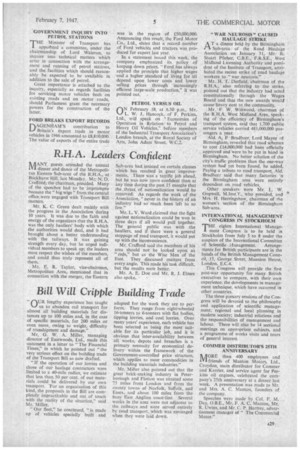Bill Will Cripple Building Trade
Page 31

If you've noticed an error in this article please click here to report it so we can fix it.
" nUR lengthy experience has taught \-1 us to abandon rail transport for almost all building materials for distances up to 100 miles and, in the case of specific materials, for 200 miles or even more, owing to weight, difficulty of transhipment and damage."
Mr, G. W. A. Miller, managing director of Eastwoods, Ltd., made this statement in a letter to "The Financial Times," in which he pointed out "the very serious effect on the building trade of the Transport Bill as now drafted.
"If the operation of our lorries and those of our haulage contractors were limited to a 40-mile radius, we estimate that less than 50 per cent, of our materials could be delivered by our own transport. For an organization of this kind, the proposals in the Bill are completely impracticable and out of touch with the reality of the situation," said Mr. Miller.
"Our fleet," he continued, "is made up of vehicles specially built and adapted for the work they are to perform. They range from eight-wheeled 16-tonners to 6-tonners with flat bodies, tipping lorries, and coal lorries. Over many years' experience, each vehicle has been selected as being the most suitable for its particular job, and it is obvious that inter-availability between all works, depots and branches is a primary necessity for economical delivery within the framework of the Government-controlled price structure, which applies to most commodities in the building materials industries."
Mr. Miller also pointed out that the great brick-making industry in Peterborough and Helton was situated some 75 miles from London and from the county towns of Norfolk, Suffolk, and Essex, and about 100 miles from the busy East Anglian coast-line. Several works in the area were not adjacent to the railways and were served entirely by road transport, which wat envisaged when they were laid down.




















































































